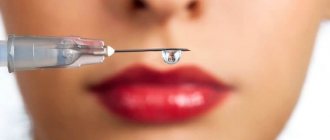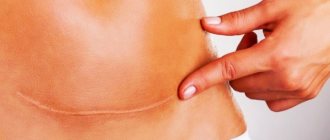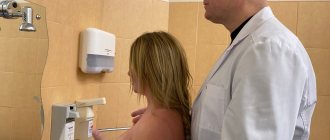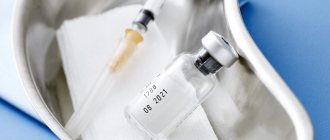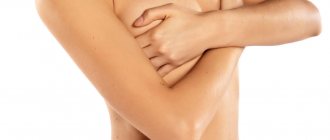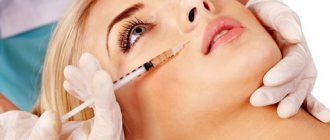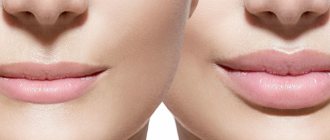What sutures are used for mammoplasty?
During a consultation with a plastic surgeon, you should find out what method of applying sutures during mammoplasty is followed by the doctor. This is very important so that a woman is psychologically ready to see the result of plastic surgery.
If reduction mammoplasty is performed, plastic surgeons use the following types of sutures:
- Short seam method.
The scar after surgery will extend from the nipple to the inframammary fold of the breast. Doctors use this suture in cases where, during reduction mammoplasty, it is necessary to remove a small amount of breast tissue (no more than 800 grams). - T-shaped seam.
Another name for the suture technique is anchoring. The postoperative incision extends from the nipple down to the inframammary fold of the gland and then horizontally along the inframammary groove. This suturing technique is used by plastic surgeons when it is necessary to reduce the breast gland in a large volume. The scar, which runs along the inframammary fold, remains invisible, and the vertical sutures, with proper care, heal quickly and become colorless.
During plastic surgery for breast augmentation, there are 3 types of sutures:
- Periareolar
. The scar runs along the line of the nipple-areolar complex. The seam after mammoplasty is very thin and invisible, so it does not bring any inconvenience to the woman. - Submammary suture.
The scar runs along the line of the inframammary fold and becomes invisible during the tissue healing process. - Axillary.
Breast augmentation occurs endoscopically through an incision in the armpit. Thanks to this, the scar becomes invisible, as it is hidden by the natural folds of the skin.
Self care at home
Taking a shower
- Do not shower for the first 48 hours (2 days) after surgery. After 48 hours, you may be allowed to shower entirely or only from the waist down. Follow your surgeon's instructions for showering.
- After drains are removed, do not shower for the first 48 hours. Showering may be allowed 24–48 hours after the drainage system is removed. Your healthcare provider will tell you when you can shower.
- Once you start showering, do so every day to keep your incisions clean.
- Before showering, remove your bra and the gauze covering the incision.
- Test the water temperature with your back or arm first because numbness may prevent you from feeling warmth in the operated area.
- Wash with warm water and mild, unscented soap. Gently wash the top cuts and drainage areas and rinse well with water.
- Do not direct the water stream directly at the breast. Direct it towards your upper back or arm. The water should gently wash the mammary gland. Gently pat the incisions dry with a clean towel. Don't rub them.
- Do not bathe until your incisions and drain sites are completely healed, as this may increase the risk of infection. You will be able to take a bath 6-8 weeks after surgery, but please discuss this with your doctor first.
- Check with your healthcare provider before using deodorant, lotion, or cream near the incision until it has healed. This usually takes 6 weeks.
Cloth
- Wear a soft, supportive bra, like the one provided by your nurse, for 6 weeks after surgery, even while you sleep. You can remove it before taking a shower.
- Do not wear an underwire bra until your incisions heal.
Medicines
- You will receive a prescription for pain medication to help relieve pain after surgery.
- Anesthesia (medication that keeps you asleep during surgery) and pain medications can cause constipation (when you have fewer bowel movements than usual). For information on how to cope with constipation, read the material Constipation.
Physical activity
- Do not lift, push, or pull objects weighing more than 5–10 pounds (2.3–5.4 kg) for 6 weeks after surgery. Keep this in mind when shopping for groceries, raising the kids, or doing laundry.
- Avoid strenuous physical activity (such as running, jogging, or jumping) for 6 weeks after surgery.
to come back to the beginning
How to treat seams after mammoplasty?
Careful breast care after reduction or augmentation mammoplasty is a necessary condition for rapid tissue healing. It is very important to follow the recommendations of the plastic surgeon in the postoperative period, since doctors have different opinions on the treatment of sutures.
Sutures are treated with antiseptics at every consultation with a plastic surgeon during the process of changing the dressing. Miramistin, iodine, chlorhexidine, brilliant green or potassium permanganate can be used for this. Treatment of sutures after mammoplasty lasts until the wounds after breast surgery are completely healed.
In some cases, plastic surgeons recommend treating the sutures with various ointments and gels if a crust has formed on the chest after surgery. The doctor selects the remedy individually for each woman; it can be Vishnevsky ointment, Actovegin or, for example, eplan.
What is periareolar access?
The surgeon makes an incision along the lower contour of the semicircle of the areola. Thus, the scar is located on the border between pigmented and unpigmented skin. The periareolar approach is suitable for installing round and anatomical implants under the muscle or mammary gland.
Advantages
- Good cosmetic effect;
- Suitable for breast augmentation with small volume implants;
- The doctor can additionally perform periareolar mastopexy without unnecessary incisions. In this way, ptosis (mild degree), nipple asymmetry is corrected, and areolas are corrected.
Minuses
- The risk of loss of nipple sensitivity and damage to the mammary gland increases. May lead to lactation problems.
Who may be suitable for
This type of access for augmentation mammoplasty is suitable for installing small-volume implants. The size of the patient's areolas should correspond to them. If there is a slight degree of ptosis (breast sagging), a periareolar lift can be performed.
Healing time for sutures after mammoplasty
Healing of sutures after mammoplasty is a purely individual process, since the rate of tissue regeneration depends on many factors. In most cases, complete healing of the wound occurs within 2 to 3 months. If after the operation tissue healing occurs without complications, the stitches do not hurt and the wound has not split, then the postoperative scars first acquire a pink tint, after which they turn white and become almost invisible.
To ensure that scars after mammoplasty remain invisible, the operation must be performed by an experienced plastic surgeon who can correctly connect the edges of the wound and apply cosmetic sutures. Sign up for a consultation at Dr. Osin's plastic surgery clinic to personally evaluate real photographs of patients after breast surgery and the quality of sutures after mammoplasty.
The information on the site was personally verified by plastic surgeon Maxim Aleksandrovich Osin; if you have any additional questions, call the phone number listed on the site.
One of the most important problems in plastic surgery is the quality of postoperative scars. Of course, they should not be visible, or at least they should be as inconspicuous as possible. We discussed the issue of postoperative scars with the famous plastic surgeon Ilya Vyacheslavovich Sergeev. Dr. Sergeev performs a wide variety of plastic surgeries, but is especially known as a specialist in mammoplasty, so this material will talk about stitches for breast augmentation and breast lift. However, sutures always remain sutures, so everything said can be safely applied to any postoperative sutures.
What factors influence scar formation? Why do they sometimes turn out completely invisible, and sometimes very wide and rough?
Ilya Vyacheslavovich Sergeev believes that it is important not only how the doctor applies the sutures, but also (no less!) under what conditions the suture is formed. The first 45 days after surgery are especially important for the formation of the correct scar.
Suture technique
For many years I have been looking for an answer to the question: how to make postoperative scars as thin and invisible as possible? All surgeons know that you cannot use tweezers with teeth and rough clamps - this is the ABC, but with practice comes an understanding of more subtle, but no less significant factors. For example, it is necessary to work correctly and as gently as possible with the edges of the skin, avoiding injury.
In addition, experience shows that the greater the tension of the seam, the wider the scar will be. Therefore, it is necessary to exclude transverse stretching of the seams. To relieve tension from the skin, first we stitch together the inner layers of the dermis, which will take on all the tension and hold the tissue, and then we stitch together the middle and surface layers freely, without any tension. With this application, the seam will have the shape of a convex roller, as if something had been placed under it. The inner (tight) seam will gradually stretch a little, but since there is a roller (the fabric lies like a wave), the surface layers of the skin will not be stretched until the roller is completely straightened. This way we will avoid tension on the seam on the skin, which means it will stretch and form a wide scar.
One should also strive to reduce the risk of necrosis and reactions to suture material. To do this, when applying a suture, we try to make as few knots as possible, because it is in the places where the knots are located that small necrosis of the tissue most often occurs and threads come to the surface, which subsequently leave additional scars. When I do a vertical lift, I try to place the nodes that hold the deep layers of the dermis as deep as possible.
When selecting suture material, we prefer to use absorbable threads, because the body reacts less to them and there is no need to further injure the skin by pulling them out.
Sew or glue?
I treat glue worse. It does not get rid of scars, because if there is a cut, a scar will form in its place, regardless of whether we sew it or glue it. But firstly, there is often a rejection reaction to glue, and secondly, this material is not reliable enough - it does not always hold the seams well, allowing them to “play”.
Strips or silicone patches?
Not all patients understand why strips and patches are needed at all.
This is not just a dressing material. The strips secure the seams, preventing them from stretching. In addition, strips and adhesives protect the seams from rubbing and mechanical irritation, which is no less important for the formation of invisible scars. In practice, I was convinced of the need to glue the seams with strips. The advantage of strips over silicone stickers, in my opinion, is that they hold the edges of the wound more rigidly and more reliably, ensuring the correct formation of thin and invisible scars.
In Russia, not all surgeons keep strips on for long enough. In my opinion, this is a mistake that can lead to the formation of rough scars. In many European clinics, on the contrary, they are used for up to six months. But, according to our observations, wearing strips for such a long time is not only inconvenient for the patient, but also not very justified. We recommend using strips for about a month and a half.
Using silicone patches after surgery, in my opinion, does nothing. I've worked a lot with these patches in the past, but if the stitch starts to come apart 3-4 weeks after surgery, no patch will hold it in place.
Scar care after mammoplasty
I apply the strips for a month, and then cover them with napkins on top. I remove these napkins 3-4 days after the operation, after which I allow the patient to fully wash herself in the shower. But my patients wash with the strips (without removing or changing them!) and after a shower they treat the strips with alcohol or vodka. I don't recommend re-taping strips every week. This is too irritating to the seam and it will only get worse.
In my experience, crusts do not greatly affect the quality of the scar, although if they are wide crusts, the seam will usually be somewhat rougher. But if these are thin crusts, they do not affect the seam in any way. After a month, I remove the strips, and if any crusts remain, I do not forcibly remove them - during the first week they fall off on their own in the shower. When I started using this technique, I was convinced that the scars on my patients became much better. A postoperative scar takes up to one and a half years to form, but usually after a month the seam becomes barely noticeable and does not cause distress to patients. The critical period in the formation of postoperative scars occurs a month and a half after the operation. At this time, the scar may become wider. Therefore, during the first month and a half, it is important to fix it well, avoid mechanical irritation and properly care for it.
Stitches after breast lift
Not all sutures heal equally successfully. During a breast lift, the areola suture heals best. This is generally the most aesthetic lift, which gives the most invisible scars. But there is a golden rule in areolar lifting: it is undesirable to excise more than three centimeters of tissue. This limits the surgical options for correcting more severe ptosis. In second place in terms of aesthetics is the vertical scar, and in third place is the seam under the breast. An inframammary scar often heals worse because surgeons adapt it less well and pay less attention to it. Sometimes the junction of a vertical scar with a horizontal one heals capriciously. With all the attention paid to this area of the suture, such complications occur quite often, so sometimes after 4-6 months a slight correction of this triangle under local anesthesia is still required. In my clinic, such mini-suture corrections are performed for approximately 5% of patients who have had a vertical breast lift.
Hypertrophy of scars after mammoplasty
Scar hypertrophy is mainly caused by inflammatory processes resulting from errors in suturing, such as: 1. Many suture materials, many knots. Inflammations may occur, which sometimes spread and cause scar dehiscence and hypertrophy. 2. Strong tension on the edges of the wound and adaptation of only the superficial layers of the skin. This almost always leads to scar hypertrophy.
There are cosmetic and medicinal methods for correcting hypertrophied scars. You can make the scar smoother by grinding, or shrink it a little with injections, but. In my experience, you can’t make it very thin using these methods. I believe that if the scar has become wide after hypertrophy, then it is better to alter it.
Keloids after mammoplasty
As for mammoplasty, keloids most often occur with inframammary access. However, with the correct sewing technique, the postoperative scar in this area also turns out to be quite thin. Keloids are also found under the armpit. In general, the entire area of the décolleté, shoulders and armpits is very susceptible to the formation of keloid scars.
But I have never encountered keloids during breast augmentation (as opposed to a lift) through the areolar approach.
When it comes to keloid in its pure classic form, it is better not to take risks. If the patient has a tendency and keloids occur at every opportunity - any scratch turns into a keloid scar, then all our efforts and all the equipment are ineffective. Unfortunately, we are forced to refuse such patients.
To communicate with patients who have undergone breast augmentation, lifting or reduction, come to our forum in the Mammoplasty
How to care?
Recommendations for patients on how to get in shape after breast augmentation
How to care for stitches after mammoplasty to minimize the risk of unsightly, highly visible stitches? The patient must strictly follow all the instructions of the treating specialist, which include the mandatory wearing of compression garments. In order to eliminate tissue tension on both sides of the suture, the edges of the wound must be fixed with a special silicone plaster for one month. This way you can avoid the formation of an unsightly wide scar, forming a neat and thin one instead.
Once the scar is formed (that is, paler and elastic), you can apply a cream containing cortisone to it. Its use will reduce the size of scars, make them smooth and almost invisible. It is important to use this remedy only after the scar has formed, otherwise the effect may be reversed.
Types of scars
In the vast majority of cases, scars after correction of the shape and size of the breast are very thin, pale and almost invisible. However, if complications arise, they can be quite rough and noticeable. It is customary to distinguish the following types of scars:
- Normotrophic - characterized by a lighter color than the rest of the skin, are elastic and can be leveled with peeling or microdermabrasion;
- Hypertrophic - protrude above the skin, have a pink color, they are polished with a laser;
- Keloids are the most complex and cannot be removed surgically; corrected with hormonal injections.
